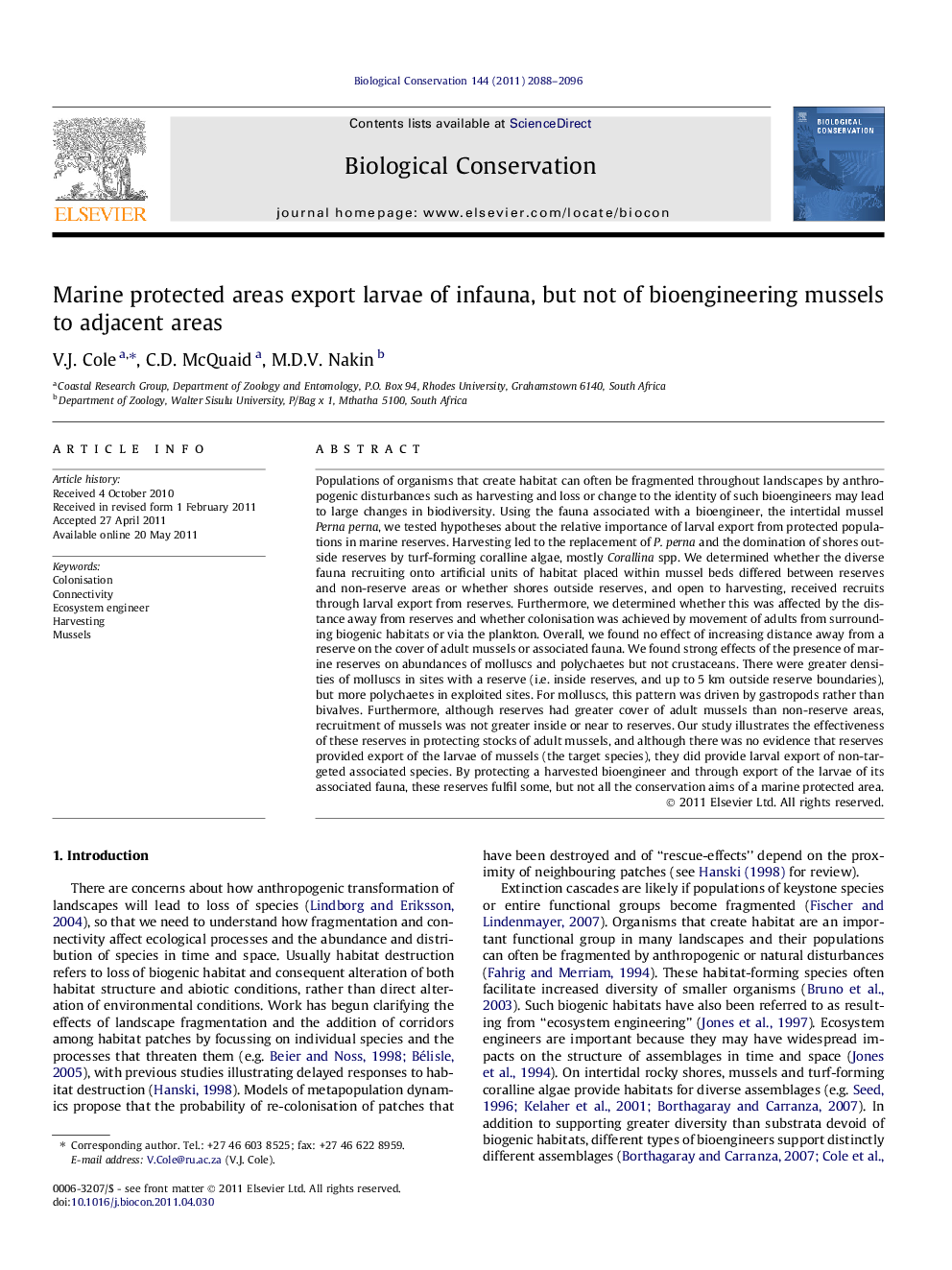| کد مقاله | کد نشریه | سال انتشار | مقاله انگلیسی | نسخه تمام متن |
|---|---|---|---|---|
| 4385431 | 1304536 | 2011 | 9 صفحه PDF | دانلود رایگان |

Populations of organisms that create habitat can often be fragmented throughout landscapes by anthropogenic disturbances such as harvesting and loss or change to the identity of such bioengineers may lead to large changes in biodiversity. Using the fauna associated with a bioengineer, the intertidal mussel Perna perna, we tested hypotheses about the relative importance of larval export from protected populations in marine reserves. Harvesting led to the replacement of P. perna and the domination of shores outside reserves by turf-forming coralline algae, mostly Corallina spp. We determined whether the diverse fauna recruiting onto artificial units of habitat placed within mussel beds differed between reserves and non-reserve areas or whether shores outside reserves, and open to harvesting, received recruits through larval export from reserves. Furthermore, we determined whether this was affected by the distance away from reserves and whether colonisation was achieved by movement of adults from surrounding biogenic habitats or via the plankton. Overall, we found no effect of increasing distance away from a reserve on the cover of adult mussels or associated fauna. We found strong effects of the presence of marine reserves on abundances of molluscs and polychaetes but not crustaceans. There were greater densities of molluscs in sites with a reserve (i.e. inside reserves, and up to 5 km outside reserve boundaries), but more polychaetes in exploited sites. For molluscs, this pattern was driven by gastropods rather than bivalves. Furthermore, although reserves had greater cover of adult mussels than non-reserve areas, recruitment of mussels was not greater inside or near to reserves. Our study illustrates the effectiveness of these reserves in protecting stocks of adult mussels, and although there was no evidence that reserves provided export of the larvae of mussels (the target species), they did provide larval export of non-targeted associated species. By protecting a harvested bioengineer and through export of the larvae of its associated fauna, these reserves fulfil some, but not all the conservation aims of a marine protected area.
► Larval export of mussels and associated fauna from marine reserves was tested.
► Harvesting outside reserves led to replacement of mussels by coralline algal turf.
► There was no effect of distance away from a reserve on mussels or associated fauna.
► Reserves protected adult stocks of mussels but there was no export of mussel larvae.
► Reserves provided larval export of non-targeted associated species.
Journal: Biological Conservation - Volume 144, Issue 8, August 2011, Pages 2088–2096